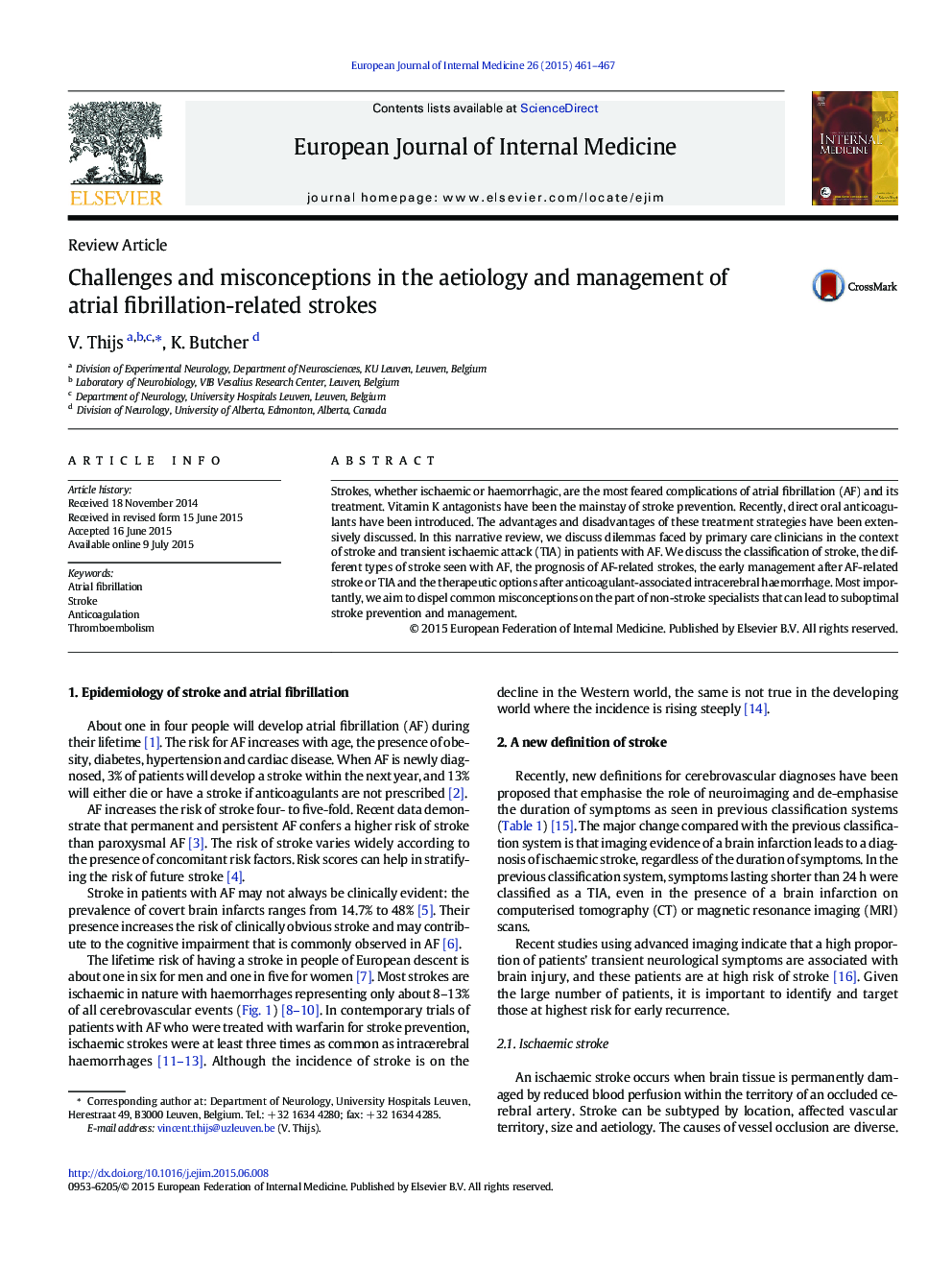| Article ID | Journal | Published Year | Pages | File Type |
|---|---|---|---|---|
| 6151566 | European Journal of Internal Medicine | 2015 | 7 Pages |
â¢Imaging is needed to differentiate TIA and ischemic stroke.â¢Pathognomonic clinical or imaging features of cardioembolic stroke are lacking.â¢Prognosis is worse after atrial fibrillation-related ischemic stroke.â¢The optimal timing of starting anticoagulation after ischemic stroke is unknown.
Strokes, whether ischaemic or haemorrhagic, are the most feared complications of atrial fibrillation (AF) and its treatment. Vitamin K antagonists have been the mainstay of stroke prevention. Recently, direct oral anticoagulants have been introduced. The advantages and disadvantages of these treatment strategies have been extensively discussed. In this narrative review, we discuss dilemmas faced by primary care clinicians in the context of stroke and transient ischaemic attack (TIA) in patients with AF. We discuss the classification of stroke, the different types of stroke seen with AF, the prognosis of AF-related strokes, the early management after AF-related stroke or TIA and the therapeutic options after anticoagulant-associated intracerebral haemorrhage. Most importantly, we aim to dispel common misconceptions on the part of non-stroke specialists that can lead to suboptimal stroke prevention and management.
